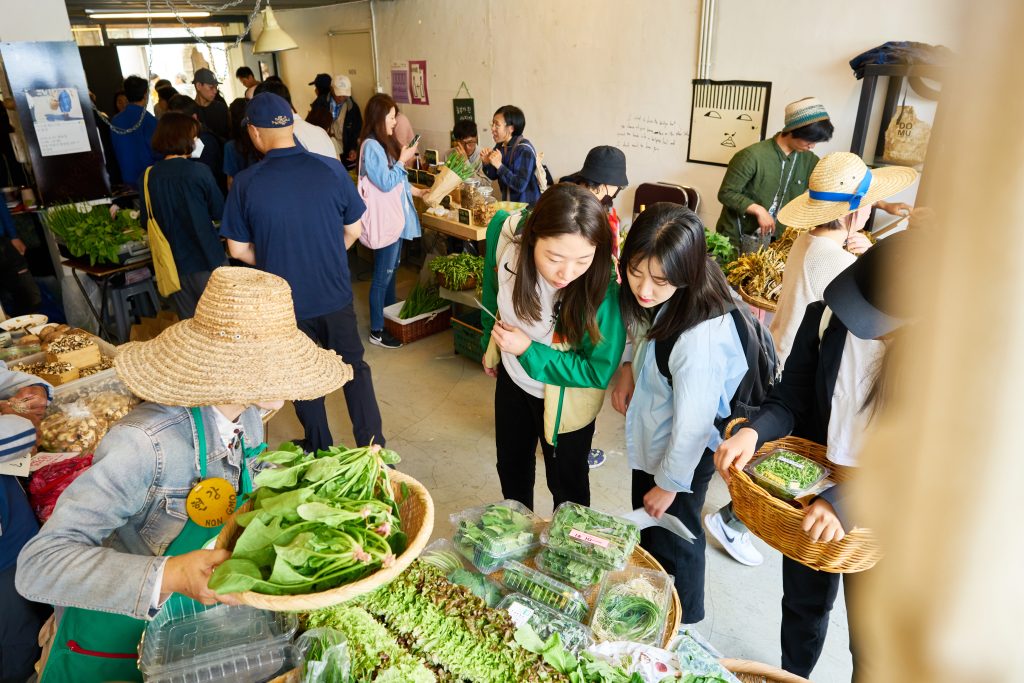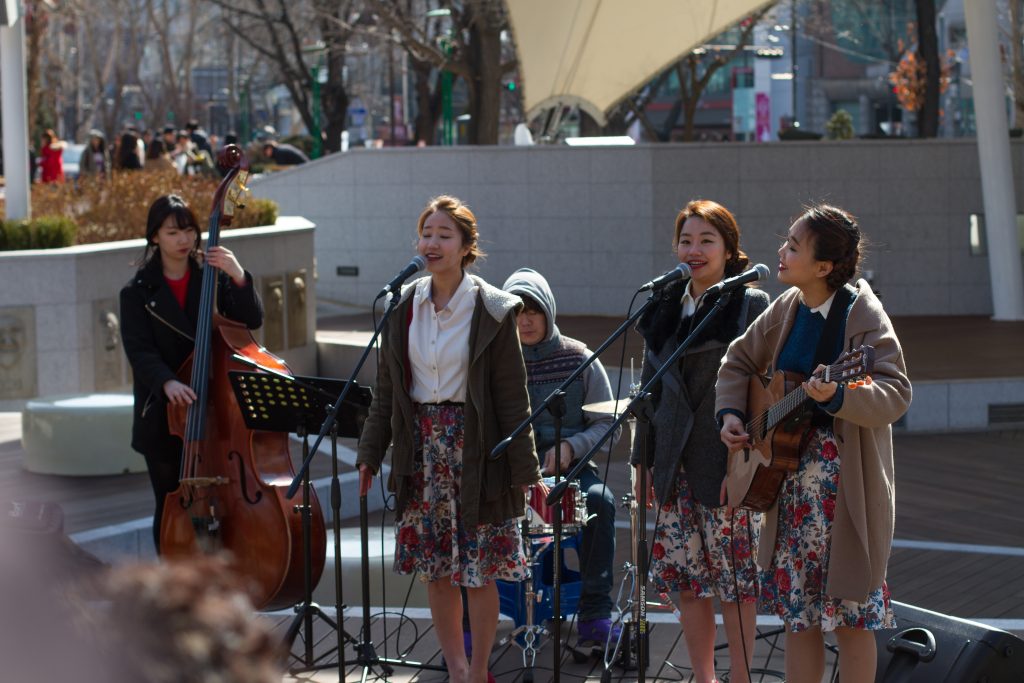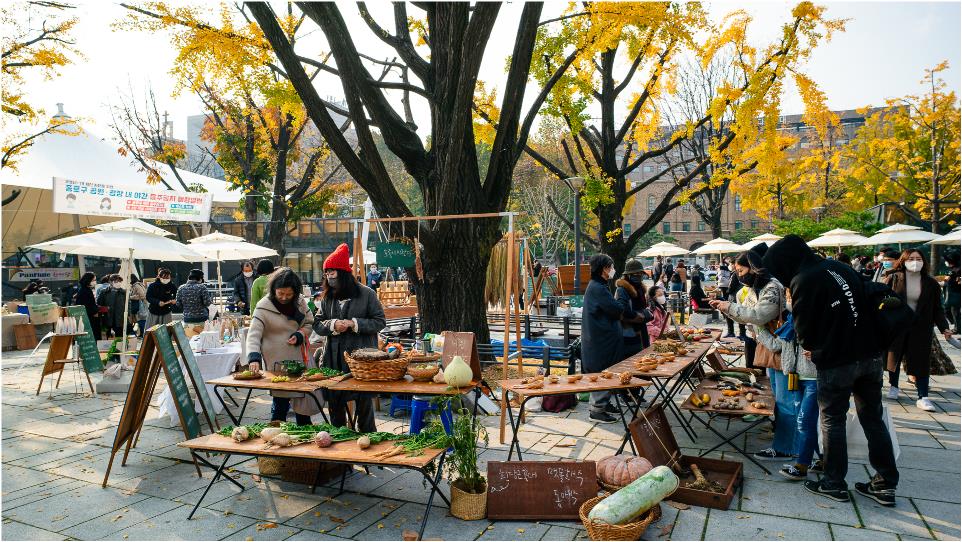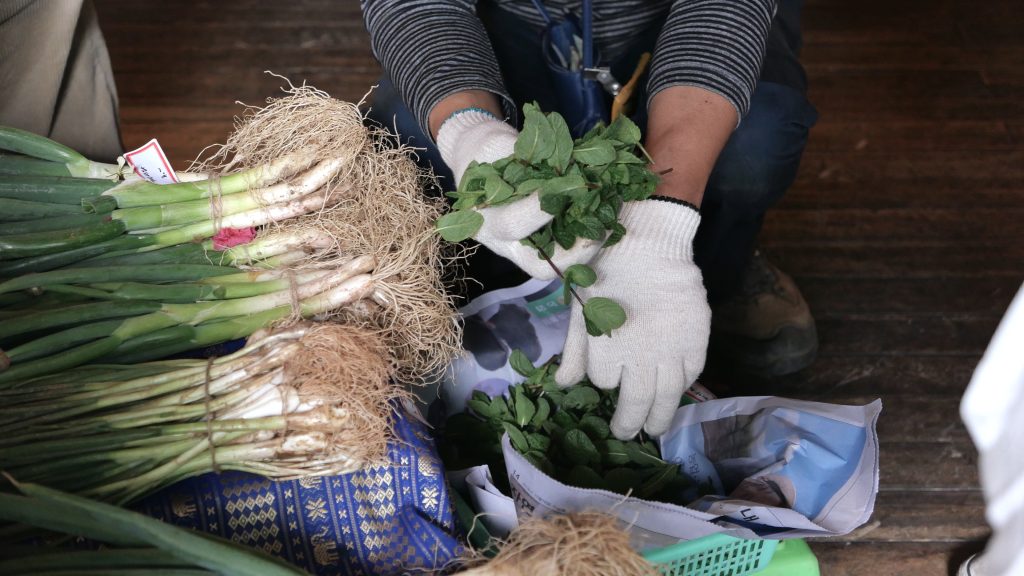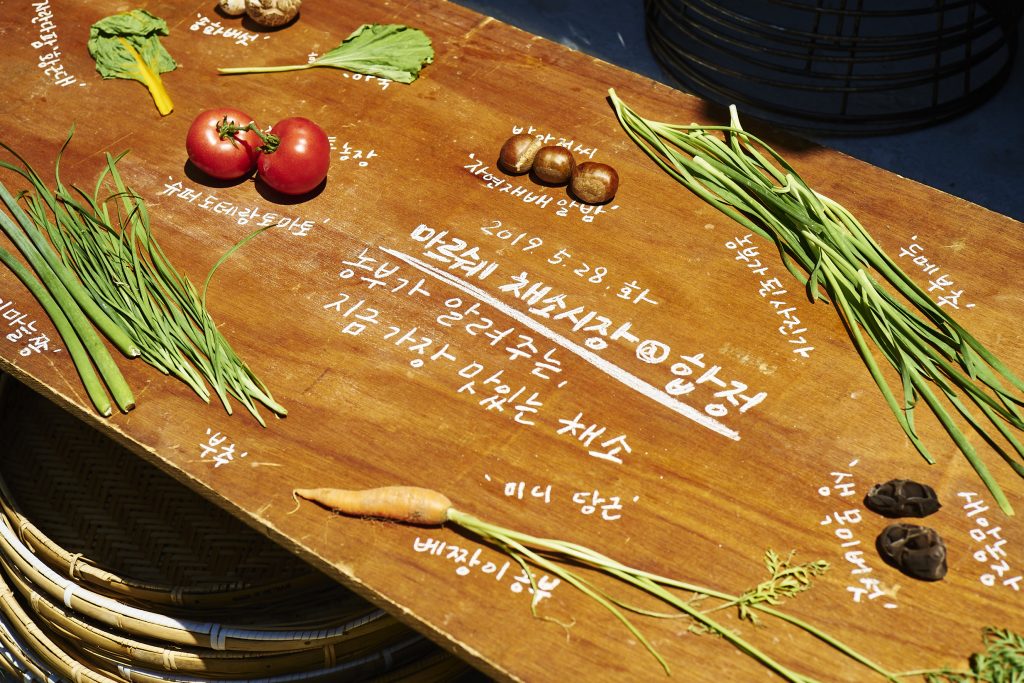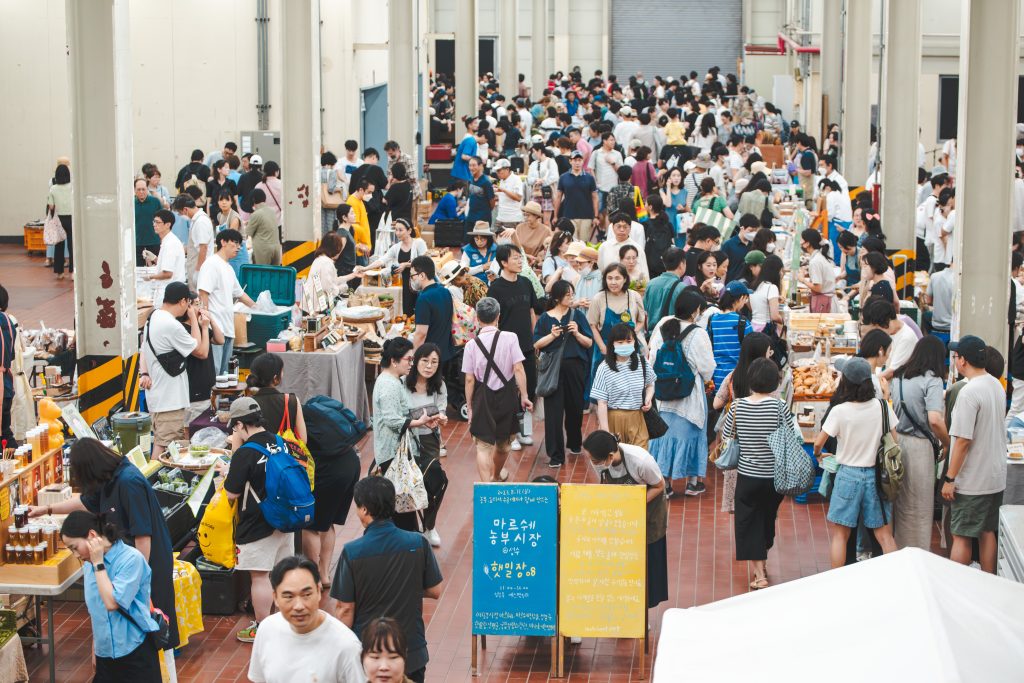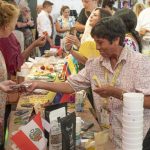Guest post by Marche@ team
11 years and more at the Korean Farmers Market, Marche@
Marche@ was first held in October 2012 at the ARCO Artist House in Hyehwa-dong, Seoul, South Korea. The name is a combination of French marché (Market) and English at (@), which means a market that can be opened anywhere. October 15, 2023 marked the 11th anniversary of Marche@!
Our motto is the ‘conversational market’. It originated from the desire to create a market with people, relationships, and conversations instead of a market where only money and goods are exchanged. We think a more enjoyable world can be created from the conversations in this small market about where and how the things we eat, drink, and use are made.
In the first year of Marche@, more than 50 teams of farmers, chefs, craftspeople, musicians participated in the market. It is a place of sale for urban farmers who farm a small amount of various varieties, and it is a way for those who farm using eco-friendly or organic methods to meet consumers directly and share their processes. We call this market model the “Farmers Market”. Many people from across the region gather at this market and it has become its own community. Since then, the farmers market has been held regularly in key areas of urban regeneration, with its home base in Hyewha-dong, Seoul.
In 2019, we also created another market model called the “Vegetable Market” that adapts to the effects of climate change by incorporating indoor space at the market. The central ideas for this market model are to blend into people’s daily lives, to allow space for conversations with producers, and to restore the joy of both selecting one’s seasonal vegetables and filling the table with them. Although the number of participating teams is smaller than that of our farmers markets, the vegetable market has also become a beloved market. At the “Vegetable Market”, we promote healthy and delicious seasonal vegetables, urban and rural connections through food, the importance of local food systems, environmental issues, and biodiversity.
Currently, our Farmers Markets are held once a month – on the second Sunday of each month. 50 to 60 teams of producers and workers participate in the farmers market each market occurrence. We host various cultural events during the market, such as music performances, lectures, cooking classes, and exhibitions. The Vegetable Market is held three times a month – the first Monday, the third Saturday, and the fourth Saturday. 20 to 40 teams of producers and workers participate in this market, which also includes music performances and other collaborations.
Marche@ is held about 50 times a year, and the average number of visitors each occurrence is about 600 in the smallest vegetable market @Seogyo and 5,000 in the largest farmer market @Hyehwa. The monthly market schedule is included below:
- 1st Monday Vegetable Market @Seogyo
- 2nd Sunday Farmers Market @Insa or Farmers Market @Hyehwa
- 3rd Saturday Vegetable Market @National Theater
- 3rd Saturday Vegetable Market @Seongsu
The farmers markets marche@ has been made by farmers, chefs, and craftspeople.
The most representative products of Marche@ are seasonal vegetables. Farmers harvest a range of vegetables, including pumpkins, eggplants, onions, lettuce, carrots, potatoes, mushrooms, corn, rice, and beans and bring them to the market every season. Fruits grown using eco-friendly methods are also popular. These fruits are very exciting to our customers and sell out the fastest in the market. There are a lot of fruits that Koreans enjoy every season, including strawberries, tomatoes, tangerines, apples, melons, watermelons, peaches, grapes, pears, persimmons, and chestnuts. Teas often made of grains, flowers, and honey are also popular.
Customers can directly speak with farmers and learn about the farm, how the vegetables are grown, the farmer’s story, and how to best enjoy the vegetables. At our markets, there are no vegetables bundled in plastic. Instead, customers can choose their vegetables individually and wrap them in paper bags.
Dishes full of seasonal vegetables, sauces such as jam and chutney, bread full of seasonal fruits, and tofu are also served. Beer made from wheat grown in Korea, traditional seasonings or oil such as soybean sauces, sesame oil made by fermenting native grains, and healthy milk and yogurt made in small livestock farms can also be found at Marche@. The chefs are delivering delicious dishes to customers in a healthy way, following the farm-to-table model.
Handicrafts, such as wooden bowls, wax candles, linen, clothes made from vegetable fibers, and traditional bamboo crafts are also available at the market, enhancing its beauty.
What makes the unique Marche@ markets shine!
- Marche Friends: Marche@ is run by the nonprofit organization ‘Farmers Market Marche.’ The activists here, we call them “Marche Friends.” Marche@ has been held every week for over 10 years and has been able to grow because of the efforts of Marche Friends.
- Marche Volunteers: Marche volunteers work closely with Marche Friends and who have made Marche@ together. Over 20 volunteers support the market every time. They help producers carry goods and keep the market safe and clean. The volunteers, especially those who have been with Marche for a long time, are called the “Crew.” They are the market experts at Marche@. The market also has a wonderful partner that sets up tents and tables, as well as the electronic devices for musical performances, as well as a group of musicians, photographers, and videographers who support the market.
- Re-use Program: We call it #다시살림 (dashi-salim) which means re-living again. Marche@ operates the market in an eco-friendly way. In Korea, many people are trying to reduce waste, but in many places, there are still many things that are single-use products. To reduce disposable items and waste, customers at Marche@ bring shopping baskets and personal bowls. In the “Re-Living Booth” of Marche@, you can circulate items that can be used again in the market, such as paper bags, ice packs, and glass bottles.
- Vegetable Map: Marche doesn’t create disposable posters. Instead, we use chalk on wooden boards to guide you through the market. On the yellow and blue A-frame boards that symbolize Marche@, we include basic information about the market. On the green A-frame boards, we draw a map of the market. The most special part of the market is the vegetable map. This map features one item brought by each producer on that market day and allows you to see the variety of seasonal vegetables at a glance.
If you have a chance to visit Seoul, be sure to visit and experience all the beautiful and unique Marche@ markets!
To learn more about this market, be sure to follow them on their beautiful Instagram.




